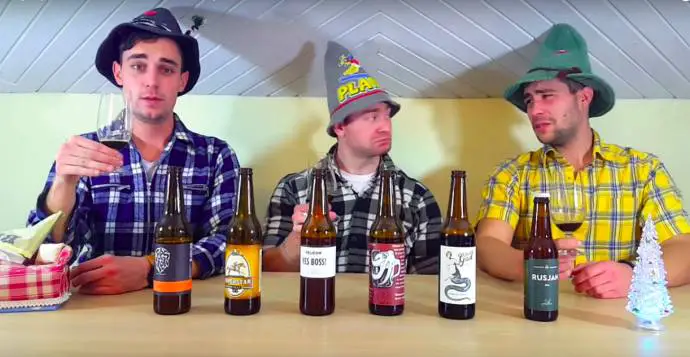August 7, 2018
We’re huge fans of the Republic of Slovenia Statistical Office (Statistični urad RS), which collects data and transforms it into interesting visualisations and texts, ideal for learning more about the country and one’s own position in it. Today we turn to a topic close to our heart, especially in the summer months, and in particular the moment that we’re writing this is in, with not a cloud in the sky and the sun’s incessant heat driving us to distraction as we think about the pleasure to be had from the end of work drink we have chilling in the fridge, to be enjoyed with the glass in the freezer, and to be opened as soon as this is published.
To that end, let’s get to the numbers.
The last year for which there are official figures on beer consumption, 2015, show that the average Slovene consumed 26 beers over the year, which, as often happens with statistics, makes me wonder about the parts of the country that I never see, since I know many people who put this back in a month or less. (Compare / contrast with average wine consumption, which was last assessed at 39 litres per year.)
While anecdotal evidence – talks with some of leading players in the craft beer scene – has suggested that there are around 100 brewers in Slovenia, the official figures are significantly lower, although perhaps this is because some producers are failing to register their work, or undertake brewing as one of their minor activities. This is because in 2017 only 57 enterprises stated the production of beer as their main registered activity, although this still represents a huge increase since 2010, when there were only 13 such firms.
Turning to where that beer ends up, a total of €28.5 million worth was exported in 2017, mostly going to Croatia (28%), Italy (28%) and, perhaps surprisingly, Bosnia and Herzegovina (21%). With regard to imports, the largest provider is Austria (39%) –home to the “Slovenian” brand of Bevog – followed by Croatia (17%) and Italy (10%).
The peak months for beer sales are naturally the hotter ones, with 41% taking place in June, July and August, and the latter accounting for the bulk of this. Although the data give no breakdown as to the nationality of the drinkers, we can assume that the tourist trade helps out here, along with the heat, as many Slovenes decamp to Croatia for a week or so, where they can enjoy such delights as Žuja / Karlovačko in place of Laško / Union.
Finally, the Statistical Office provides invaluable information as to whether you’re paying to much for a glass of liquid sunshine, finding that in pubs and restaurants half a litre of beer cost an average of €2.78 in 2017, while in stores the same amount will cost less than €1.
Now time for that beer.






